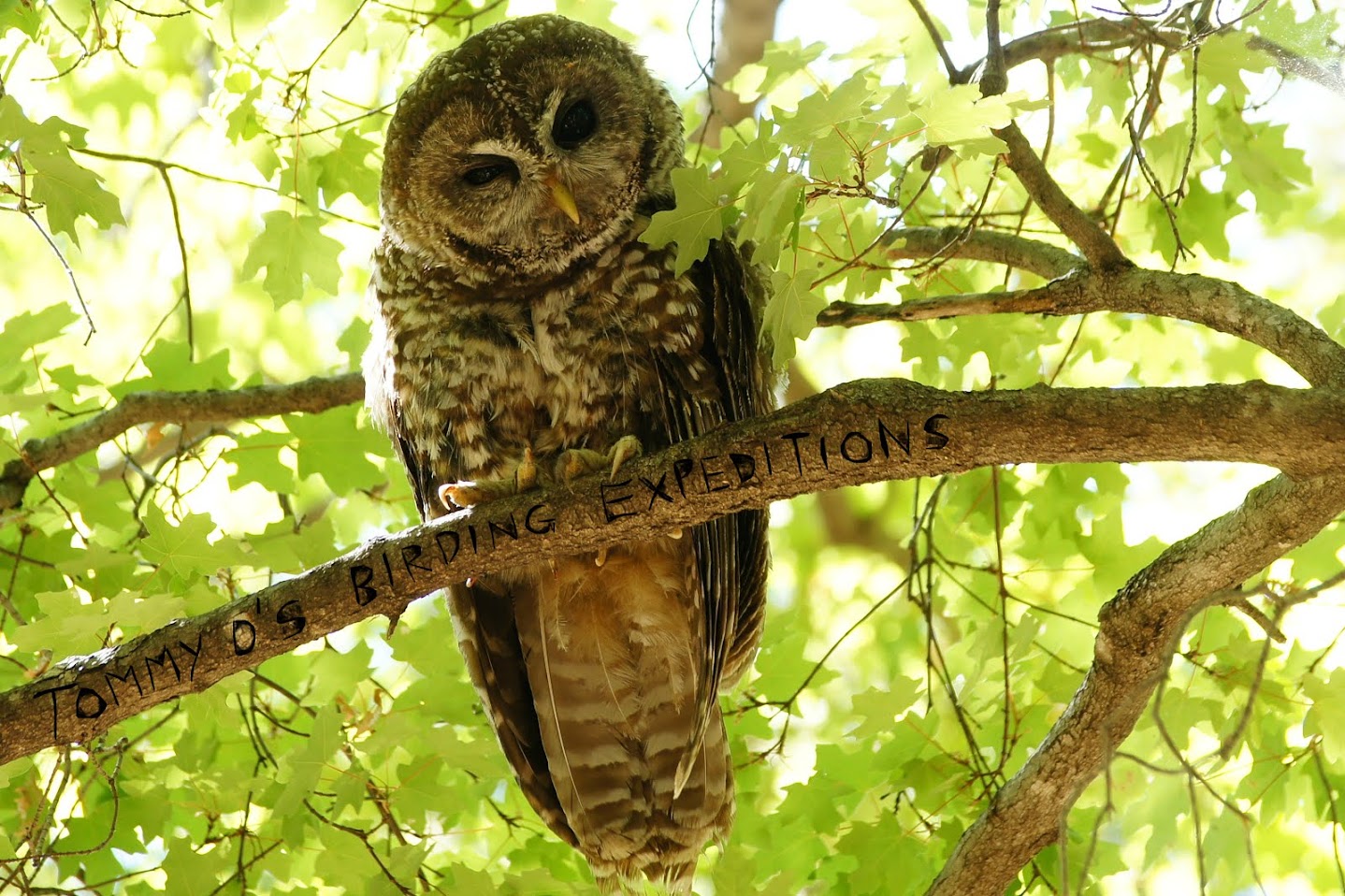Whenever I've driven north of Phoenix up the 1-17, I always noticed a large stand of cottonwood and willow riparian trees along the town of New River. It has always looked like a very productive place for birds. Steve and Joan Hosmer, who live in Anthem shortly south of New River, became the first birders to really explore this area, and they showed it to Susan, Babs, and I. This place has a nice mix of riparian and desert habitat, and easily serves as a migrant trap. It is a very noticeable patch of green in not such green part of the state. For a migrant passing over, it would be very noticeable! This is what I used to see.
But this time, I actually found myself walking up to the New River Nature Preserve itself. This spot was reached by taking the New River exit off of the 1-17 and then heading north on the frontage road to the Preserve entrance.
We birded at the New River Nature Preserve for 3.5 hours, and we tallied close to 50 species. I even found a new bird for the overall list, a Canyon Towhee. The habitat at the Preserve consisted of fantastic willow/cottonwood riparian habitat, mesquite woodland, and Sonoran desert. With that mix, a variety of different birds will be seen.
Bird wise, the place was filled with it! One of the most numerous birds was the Brewer's Sparrow. These noisy and buzzy sparrows sang everywhere, but were very hard to approach within close distances to.
After numerous attempts, the five of us finally got closer to a few of the Brewer's Sparrows, who kindly fed on the ground in front of us.
Besides the army of Brewer's Sparrows, we also encountered plenty of hummingbirds, which consisted of Costa's, Anna's and Black-chinned Hummingbirds. I didn't photograph a Costa's today, but I did photograph the other two, shown below:
Black-chinned Hummingbird
Anna's Hummingbird
We also had a weird encounter with an accipiter. When we first saw this bird, we thought it was a Sharpie. I mean, it's a young bird, it looks very barred on the breast area, and the tail looks squared off perfectly. But the mohawk look on the head is questionable, which looks more Cooper's like. Odd, huh?
The bird then morphed completely into a Cooper's Hawk. Not really, but the bird got up, flew a little, and changed positions. It also called too, which Cooper's Hawk has a very distinctive and weird tone. It landed in almost the same spot. The confusing bird above, huh, was it just in a weird "sharpie" stance?
And here's a few pictures (taken by Steve, Joan, and Susan) of our awesome group!!
Steve, Joan, and I then headed to the Agua Fria National Monument in Yavapai County for more awesome birding. This location was another first visit for me, and the scenery was amazing. We had close to 40 species here, 3 of which were new additions to my Yavapai County list to bring that to 215. One of them was this Loggerhead Shrike.
As I just mentioned, this place is very scenic. We explored a road called Bloody Basin Road for most of the time we spent birding here. We also walked up and down the Agua Fria River for a short distance from a section along Bloody Basin Road that is known as Horseshoe Ford.
And the roads of the Monument got very rough after a few miles of smoothness. The roughness took over before we got to this juniper stand. So when I come back, I'll have to hike back to this area, cause my truck couldn't handle the roads. The 2nd addition to my Yavapai list were a few Sage Thrashers, where we also found a Crissal Thrasher. The 3rd addition to my Yavapai list was actually a very obliging Gray Vireo, and was our stand out highlight of the day. Steve, Joan, and I pulled up to a hillside full of junipers where I thought would be a good place to listen for the vireos. Ironically, within seconds of rolling down the windows, we heard a Gray Vireo singing! We then got out of the truck and walked off the road a bit to find the bird. It ended up being very cooperative.
It was another awesome day of birding, summed up by awesome birds, awesome locations, and awesome people to bird with!


















.jpg)
.jpg)


















.JPG)


















